Wanying Ge
Spoofing attack augmentation: can differently-trained attack models improve generalisation?
Sep 18, 2023


Abstract:A reliable deepfake detector or spoofing countermeasure (CM) should be robust in the face of unpredictable spoofing attacks. To encourage the learning of more generaliseable artefacts, rather than those specific only to known attacks, CMs are usually exposed to a broad variety of different attacks during training. Even so, the performance of deep-learning-based CM solutions are known to vary, sometimes substantially, when they are retrained with different initialisations, hyper-parameters or training data partitions. We show in this paper that the potency of spoofing attacks, also deep-learning-based, can similarly vary according to training conditions, sometimes resulting in substantial degradations to detection performance. Nevertheless, while a RawNet2 CM model is vulnerable when only modest adjustments are made to the attack algorithm, those based upon graph attention networks and self-supervised learning are reassuringly robust. The focus upon training data generated with different attack algorithms might not be sufficient on its own to ensure generaliability; some form of spoofing attack augmentation at the algorithm level can be complementary.
Malafide: a novel adversarial convolutive noise attack against deepfake and spoofing detection systems
Jun 13, 2023



Abstract:We present Malafide, a universal adversarial attack against automatic speaker verification (ASV) spoofing countermeasures (CMs). By introducing convolutional noise using an optimised linear time-invariant filter, Malafide attacks can be used to compromise CM reliability while preserving other speech attributes such as quality and the speaker's voice. In contrast to other adversarial attacks proposed recently, Malafide filters are optimised independently of the input utterance and duration, are tuned instead to the underlying spoofing attack, and require the optimisation of only a small number of filter coefficients. Even so, they degrade CM performance estimates by an order of magnitude, even in black-box settings, and can also be configured to overcome integrated CM and ASV subsystems. Integrated solutions that use self-supervised learning CMs, however, are more robust, under both black-box and white-box settings.
Can spoofing countermeasure and speaker verification systems be jointly optimised?
Mar 31, 2023Abstract:Spoofing countermeasure (CM) and automatic speaker verification (ASV) sub-systems can be used in tandem with a backend classifier as a solution to the spoofing aware speaker verification (SASV) task. The two sub-systems are typically trained independently to solve different tasks. While our previous work demonstrated the potential of joint optimisation, it also showed a tendency to over-fit to speakers and a lack of sub-system complementarity. Using only a modest quantity of auxiliary data collected from new speakers, we show that joint optimisation degrades the performance of separate CM and ASV sub-systems, but that it nonetheless improves complementarity, thereby delivering superior SASV performance. Using standard SASV evaluation data and protocols, joint optimisation reduces the equal error rate by 27\% relative to performance obtained using fixed, independently-optimised sub-systems under like-for-like training conditions.
Explainable deepfake and spoofing detection: an attack analysis using SHapley Additive exPlanations
Feb 28, 2022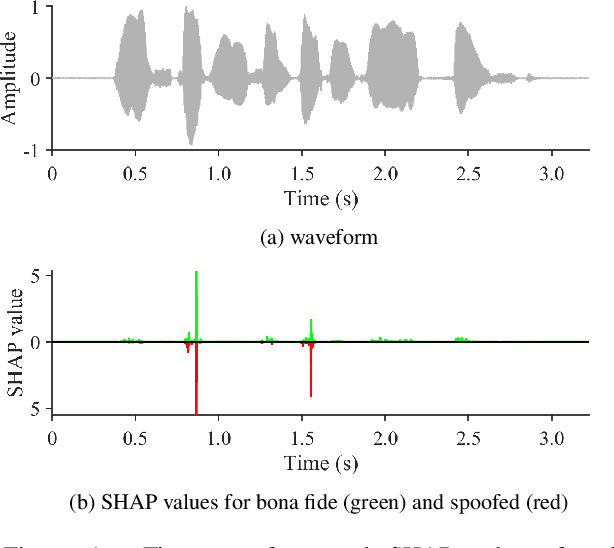
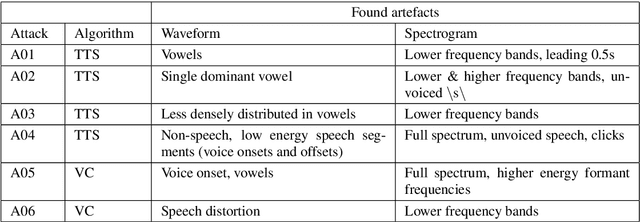
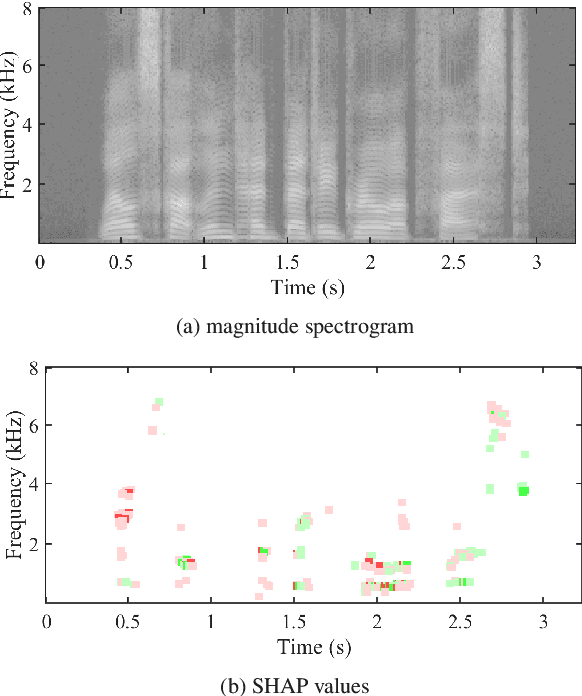
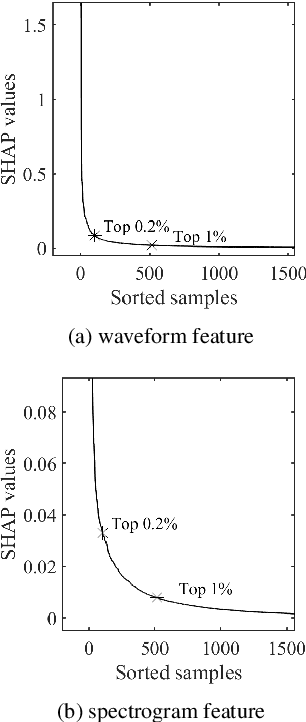
Abstract:Despite several years of research in deepfake and spoofing detection for automatic speaker verification, little is known about the artefacts that classifiers use to distinguish between bona fide and spoofed utterances. An understanding of these is crucial to the design of trustworthy, explainable solutions. In this paper we report an extension of our previous work to better understand classifier behaviour to the use of SHapley Additive exPlanations (SHAP) to attack analysis. Our goal is to identify the artefacts that characterise utterances generated by different attacks algorithms. Using a pair of classifiers which operate either upon raw waveforms or magnitude spectrograms, we show that visualisations of SHAP results can be used to identify attack-specific artefacts and the differences and consistencies between synthetic speech and converted voice spoofing attacks.
Explaining deep learning models for spoofing and deepfake detection with SHapley Additive exPlanations
Oct 07, 2021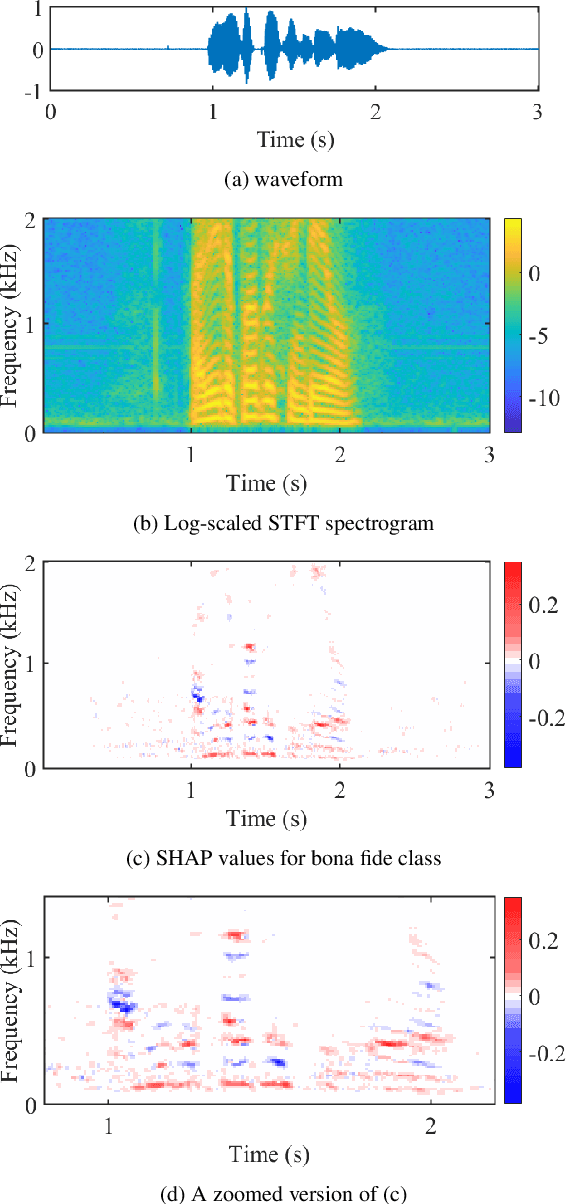
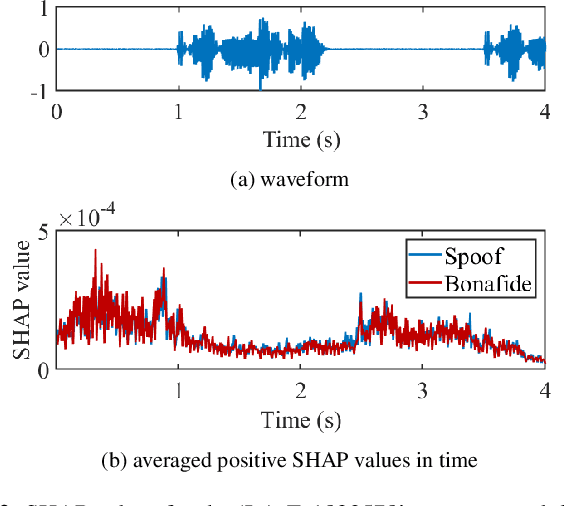
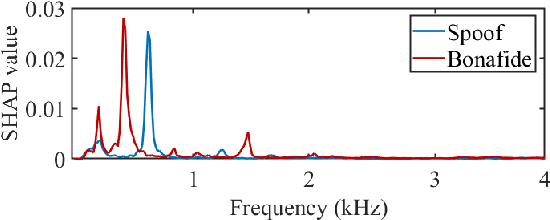
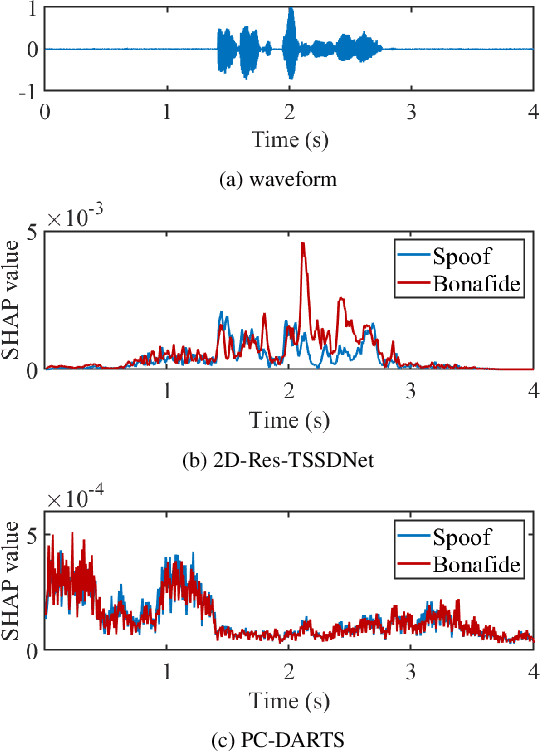
Abstract:Substantial progress in spoofing and deepfake detection has been made in recent years. Nonetheless, the community has yet to make notable inroads in providing an explanation for how a classifier produces its output. The dominance of black box spoofing detection solutions is at further odds with the drive toward trustworthy, explainable artificial intelligence. This paper describes our use of SHapley Additive exPlanations (SHAP) to gain new insights in spoofing detection. We demonstrate use of the tool in revealing unexpected classifier behaviour, the artefacts that contribute most to classifier outputs and differences in the behaviour of competing spoofing detection models. The tool is both efficient and flexible, being readily applicable to a host of different architecture models in addition to related, different applications. All results reported in the paper are reproducible using open-source software.
Raw Differentiable Architecture Search for Speech Deepfake and Spoofing Detection
Jul 26, 2021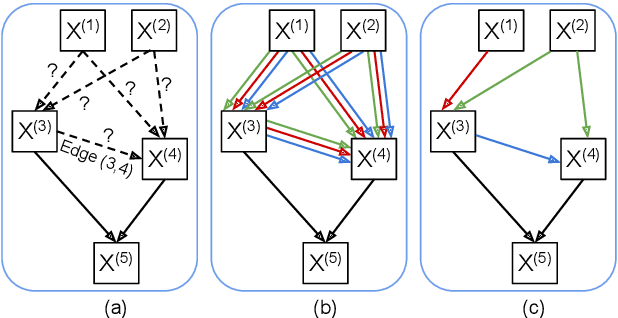
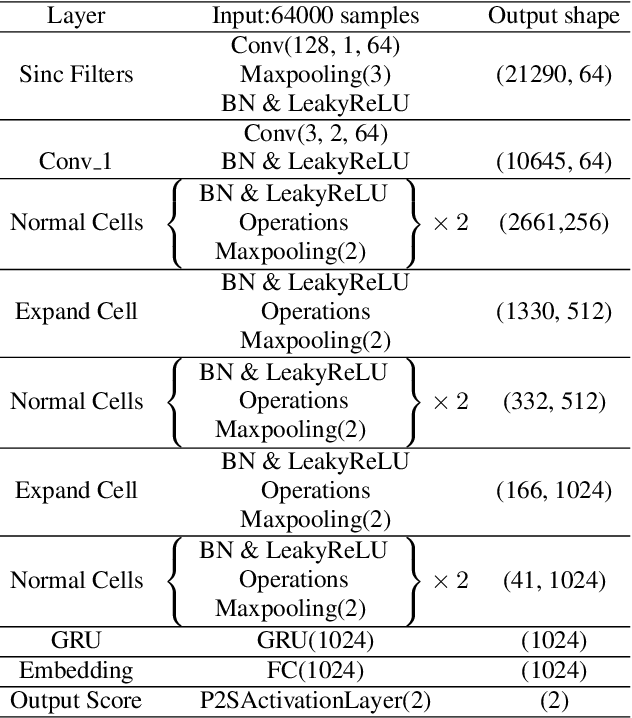

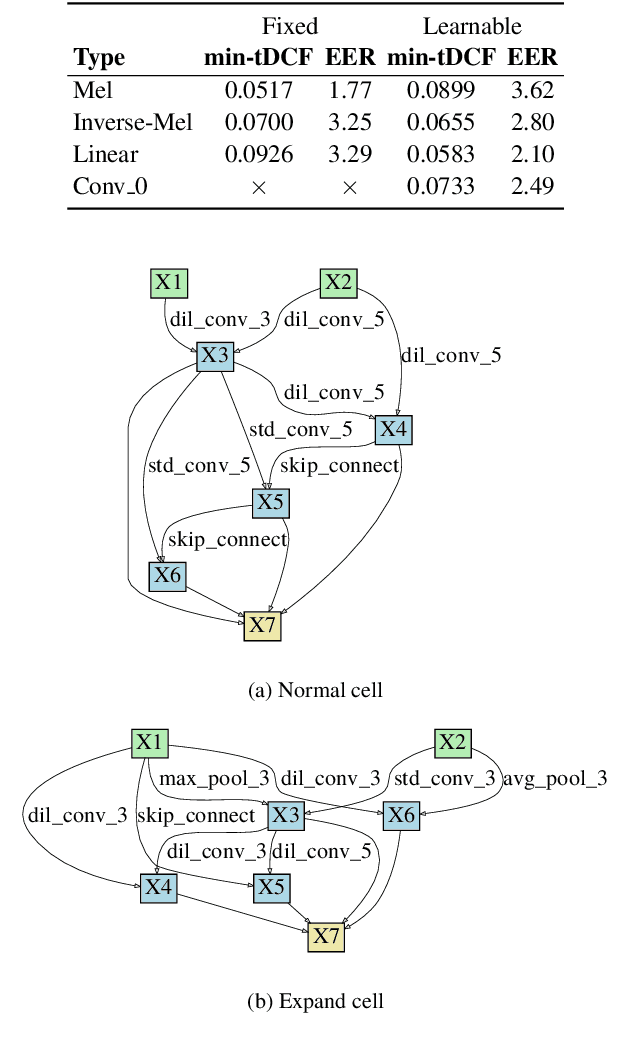
Abstract:End-to-end approaches to anti-spoofing, especially those which operate directly upon the raw signal, are starting to be competitive with their more traditional counterparts. Until recently, all such approaches consider only the learning of network parameters; the network architecture is still hand crafted. This too, however, can also be learned. Described in this paper is our attempt to learn automatically the network architecture of a speech deepfake and spoofing detection solution, while jointly optimising other network components and parameters, such as the first convolutional layer which operates on raw signal inputs. The resulting raw differentiable architecture search system delivers a tandem detection cost function score of 0.0517 for the ASVspoof 2019 logical access database, a result which is among the best single-system results reported to date.
Partially-Connected Differentiable Architecture Search for Deepfake and Spoofing Detection
Apr 07, 2021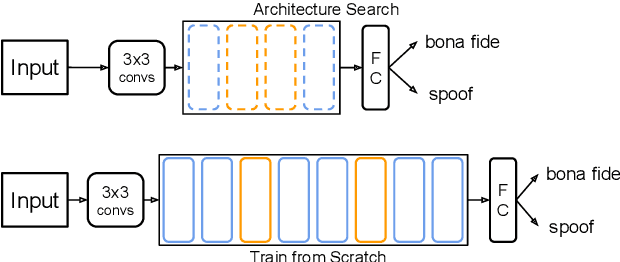
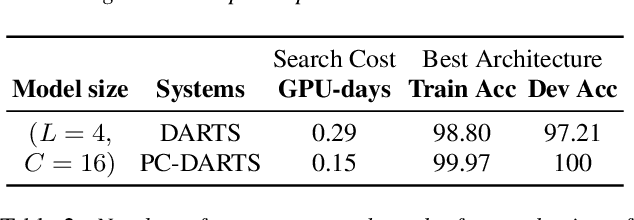
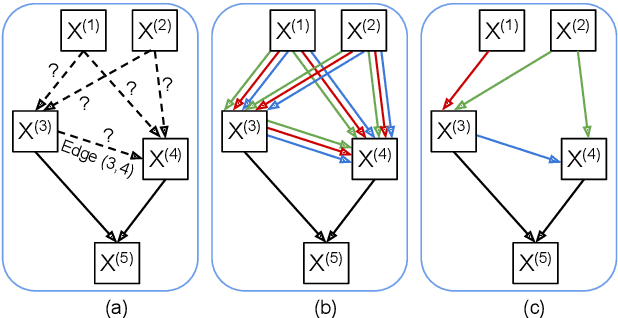
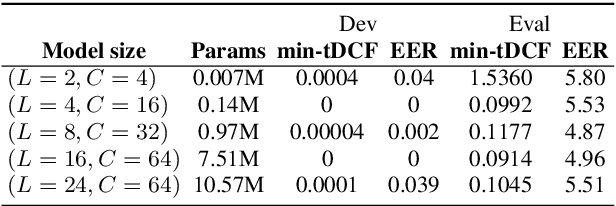
Abstract:This paper reports the first successful application of a differentiable architecture search (DARTS) approach to the deepfake and spoofing detection problems. An example of neural architecture search, DARTS operates upon a continuous, differentiable search space which enables both the architecture and parameters to be optimised via gradient descent. Solutions based on partially-connected DARTS use random channel masking in the search space to reduce GPU time and automatically learn and optimise complex neural architectures composed of convolutional operations and residual blocks. Despite being learned quickly with little human effort, the resulting networks are competitive with the best performing systems reported in the literature. Some are also far less complex, containing 85% fewer parameters than a Res2Net competitor.
 Add to Chrome
Add to Chrome Add to Firefox
Add to Firefox Add to Edge
Add to Edge